

Asbestos was once a widely used material: cheap, strong, fire and water...
MORE INFO </> Embed
</> Embed
Asbestos was once a widely used material: cheap, strong, fire and water resistant, and sound-absorbent, it was valuable in many applications – from building to automotive manufacturing to a range of fire resistant products.
Asbestos is a naturally-occurring mineral, which exists in various forms, including white, blue and brown asbestos. But what all forms of asbestos have in common is the thin fibres which the substance is made up of. It is these fibres that pose a threat to humans – when the fibres are inhaled, they can cause serious damage to the lungs.
This program covers:
This program has been produced to be shown to all personnel who may potentially come across asbestos in the workplace.
RUNNING TIME: 11 Minutes
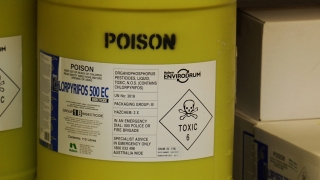

Chemicals are a fact of life. All living things are made from chemicals...
MORE INFO </> Embed
</> Embed
Chemicals are a fact of life.
All living things are made from chemicals and in fact we depend on chemistry for our very existence.....everything from the ground we walk on , to the air we breathe is made from chemicals and chemical compounds.
Every workplace, office, factory, warehouse or plant, uses chemicals to some extent or other. Chemicals range from mild cleaning agents through to highly corrosive, flammable and poisonous substances that are used for different processes and applications.
This program includes:
The safe handling and storage of all chemicals regardless of where they are used requires a commitment by everyone to follow safe work procedures. The realisation of the risks and an ongoing program to minimise the hazards will reduce accidents and make your workplace a safer workplace.
RUNNING TIME: 15 Minutes
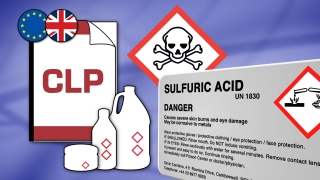

CLP stands for Classification, Labelling and Packaging. The CLP Regulation...
MORE INFO </> Embed
</> Embed
CLP stands for Classification, Labelling and Packaging. The CLP Regulation is a European Union regulation from 2008, which aligns the British system of classification, labelling and packaging of chemical substances and mixtures to the Globally Harmonised System of Classification and Labelling of Chemicals or ‘GHS’.
The CLP regulation aims to provide a logical and comprehensive approach to defining Physical, Health, and Environmental hazards of chemicals.
The programme covers the following areas:
It is true that there are many substances used in the workplace that are potentially hazardous to health BUT, it is also true that it is possible to work will all of these substances in a safe manner.
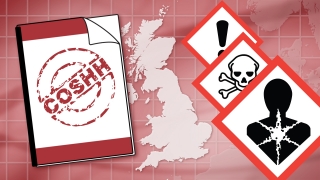

This programme covers COSHH and the CLP Regulation. COSHH, which stands...
MORE INFO </> Embed
</> Embed
This programme covers COSHH and the CLP Regulation. COSHH, which stands for the Control of Substances Hazardous to Health, is the set of regulations that aims specifically to address the health issues of using hazardous substances in the workplace with its primary aim being to prevent ill health.
COSHH covers the vast majority of substances and mixtures of substances, used or produced in the workplace, that are potentially hazardous to health.
The programme covers the following areas:
The Requirements of COSHH
COSHH supplies us with access to knowledge about hazardous substances that we use.
Combining this knowledge with established safe work procedures is the best way we can avoid accidents, injuries and illnesses associated with the use of hazardous substances.
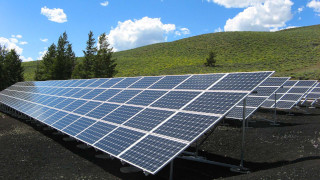

It should be the priority of every organisation, and every individual...
MORE INFO </> Embed
</> Embed
It should be the priority of every organisation, and every individual within an organisation, to protect the health and safety of their colleagues and the public, and to ensure their workplace minimises environmental damage, in all its forms.
This programme examines how organisations can be aware of their impact on the environment and methods that can be implemented to reduce environmental damage.
Topics included in the programme:
Knowing the ways in which your workplace can affect the environment, and staying aware of the ways you can prevent environmental damage from your work, is the first step to creating a more eco-friendly workplace.
RUNNING TIME: 11 Minutes
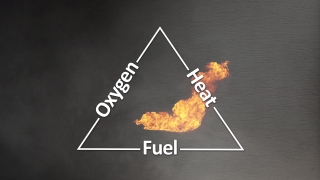

For hundreds of years fire has been used as a means of improving our...
MORE INFO </> Embed
</> Embed
For hundreds of years fire has been used as a means of improving our lifestyle. We use it to change the shape of metal, turn a solid into a liquid, and a liquid into a gas. We use it as a source of light, heat and energy. But fire can also be the source of destruction, injuries and fatalities.
This programme examines scientific facts about the ways in which fire and flammable vapours behave as well as important procedures that can be implemented to prevent the occurrence of fires.
Topics included in the programme:
Following established Safe Work Practices will help to ensure not only less likelihood of fires and explosions but also less chance of other accidents or injuries occurring.
RUNNING TIME: 12 Minutes
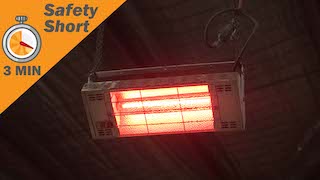

Fire can be the source of extreme destruction, serious injuries and many...
MORE INFO </> Embed
</> Embed
Fire can be the source of extreme destruction, serious injuries and many fatalities. This safety short outlines some of the prevention measures that can be taken to avoid fires.
RUNNING TIME: 3 Minutes
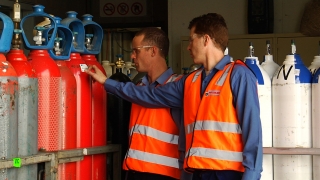

Gas cylinders supply a wide variety of gases for a multitude of different...
MORE INFO </> Embed
</> Embed
Gas cylinders supply a wide variety of gases for a multitude of different industrial, medical and domestic purposes. Most people instinctively appreciate that there are hazards associated with gas bottles and cylinders.
Included in this program:
Safety Data Sheets, safe work procedures and advice from the manufacturer and your supervisor should ensure the safety of all concerned with compressed gas cylinders.
RUNNING TIME: 15 Minutes
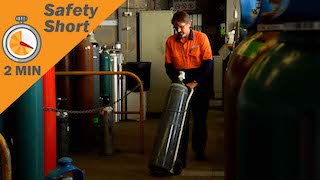

Gas cylinders supply a wide variety of gases for a multitude of different...
MORE INFO </> Embed
</> Embed
Gas cylinders supply a wide variety of gases for a multitude of different industrial, medical and domestic purposes. This safety short gives you some general guidelines to apply when handling gas cylinders.
RUNNING TIME: 2 Minutes
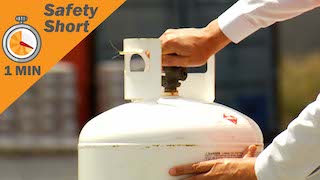

Gas cylinders supply a wide variety of gases for a multitude of different...
MORE INFO </> Embed
</> Embed
Gas cylinders supply a wide variety of gases for a multitude of different industrial, medical and domestic purposes. This safety short gives you some checks to perform before using gas cylinders.
RUNNING TIME: 1 Minute


Every year, vast quantities of chemicals are sold and shipped, for use in...
MORE INFO </> Embed
</> Embed
Every year, vast quantities of chemicals are sold and shipped, for use in workplaces around the world.
And, with a global level of trade comes a need to ensure that the hazards pertaining to chemical products are clearly communicated - regardless of where in the world those products are being put to use.
While national laws and regulations relating to chemicals may be similar, they are often different enough to require multiple sets of Labels, Safety Data Sheets, and other information when being traded internationally.
All this creates the potential for confusion - which, when dealing with hazardous chemicals - could have disastrous consequences in the workplace.
Developed at the UN level, the Globally Harmonised System of Classification and Labelling of Chemicals (or GHS for short) aims to develop a single, globally harmonised system to address:
This program provides an overview of these elements as your workplace makes the transition to the GHS.
DURATION: 13 Minutes
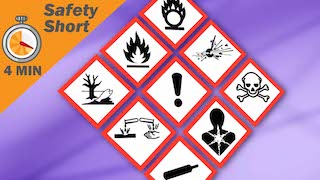

Every combination of class and category classification under the GHS,...
MORE INFO </> Embed
</> Embed
Every combination of class and category classification under the GHS, requires a unique combination of label elements, including: Pictograms, Signal Words, and Hazard Statements. This safety short gives you a quick overview of these elements.
RUNNING TIME: 4 Minutes
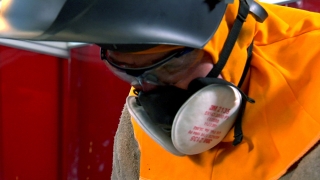

In many workplaces the potential for the inhalation of hazardous...
MORE INFO </> Embed
</> Embed
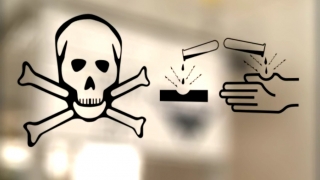

There are literally thousands of different substances used in the...
MORE INFO </> Embed
</> Embed
There are literally thousands of different substances used in the workplace.
Cleaners, adhesives, paints, solvents, pesticides, inks, lubricants and fuels are just some examples. And of course, they come in different forms: powders, granules, solids, liquids and gases.
This program covers:
The objective of this program is to highlight the major hazard areas associated with the use of hazardous substances and by so doing, increase awareness of the standards for worker responsibility in observing and being active in daily safety procedures.
RUNNING TIME: 10 Minutes
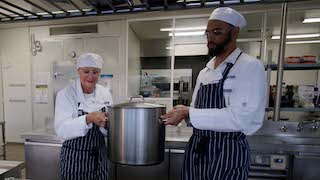

Workplaces where food is prepared or served contain a range of hazards that...
MORE INFO </> Embed
</> Embed
Workplaces where food is prepared or served contain a range of hazards that require particular care and attention to maintain good health and safety, not only for the public but also for the staff.
Some of these hazards are similar to those found in other workplaces, whereas others are specific to food-related workplaces.
This programme covers:
The food industry features a wide range of unique hazards, but the risks that these hazards present can be minimised when proper attention is paid to health and safety in the workplace.
The likelihood of accidents and injuries can be greatly reduced by ensuring the implementation of, and continuing commitment to, safe work practices and procedures.
RUNNING TIME: 22 Minutes
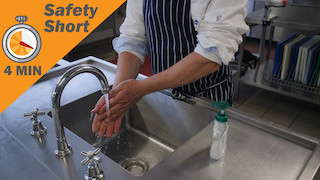

Anyone who handles food, must maintain a high level of safe handling...
MORE INFO </> Embed
</> Embed
Anyone who handles food, must maintain a high level of safe handling practices to control the spread of harmful organisms or allergens. Cleanliness is key. Always ensure your clothes, hands and face are thoroughly clean before beginning a new task. Coughing, sneezing or touching your face and hair prior to handling food can lead to cross contamination.. This safety short gives you a quick overview of how to maintain a clean workspace within a food preparation environment.
RUNNING TIME: 4 Minutes